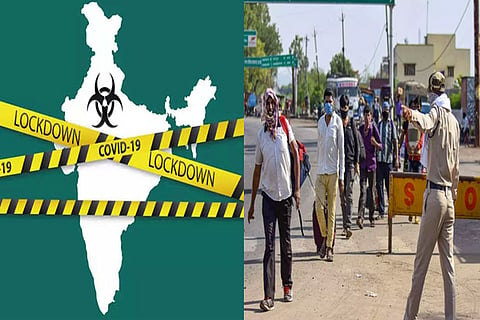

Chennai
But as lifting the lockdown is inevitable, what will it take to go back into a world that continues to be ravaged by the coronavirus? The Center for Health Security, Johns Hopkins portends that novel coronavirus shows all signs of becoming endemic in the human population. Interestingly, the coronavirus is not a new virus as some believe. It was first identified in the mid-60s, and since then, the human population has been living with milder strains - 229E, NL63, OC43, and HKU1 - all of which exhibit symptoms of the common cold. The year 2003 changed all that when a novel member of the coronavirus family went rogue, wreaking havoc among the population. SARS-CoV came in the form of an aggressive lung disease, and before it was eliminated in 2004, the epidemic affected 26 countries and resulted in more than 8000 cases. That’s when scientists woke up to the fact that the coronaviruses can infect animals and then transmit to humans. The three deadly strains of this are SARS-CoV, MERS-CoV, and 2019-nCoV. And there’s still no vaccine that could grant complete immunity.
Which is why living with coronavirus seems inevitable. The WHO quite clearly stated that the “world will have to live with corona”, and this is something most heads of state are preparing for. Simply because the economy can’t take the lockdown much longer. South Korea risked relaxing lockdown norms despite a spike in infections, and the US is gradually opening up with no mandate on masks or gloves. China has gone so far as to reopen even its Disneyland in Shanghai.
However, the Indian government is not quite ready to let people out on the streets. Apparently, the concern is that we Indians either take rules for granted or celebrate too soon, even though experts warn that there’s no reason to celebrate. With a significantly high number of asymptomatic patients, relatively low rate of testing, and a majority of the population not having the means to ‘distance’ socially due to cramped living conditions and shared resources, containing the spread is a daunting task. Is it any wonder then, that lifting the lockdown is being handled with such trepidation?
Even after restrictions are eased, people must remain vigilant about health and immunity. It will also mean changing the quintessentially Indian attitude of tolerance towards poor public hygiene and infringement into personal space. For the administration, it will mean an increased budget and spend on public health. It will also require leaders to become less concerned about the optics while taking decisions. While no one can let their guard down, there shouldn’t be knee-jerk reactions in the form of sudden clampdowns either.
But for everyone, it is important to realise that the end of the lockdown is not the end of the virus. Instead, it should be seen as a fresh start armed with lessons learnt from living in isolation, and hopefully new-found respect for rules.
Visit news.dtnext.in to explore our interactive epaper!
Download the DT Next app for more exciting features!
Click here for iOS
Click here for Android